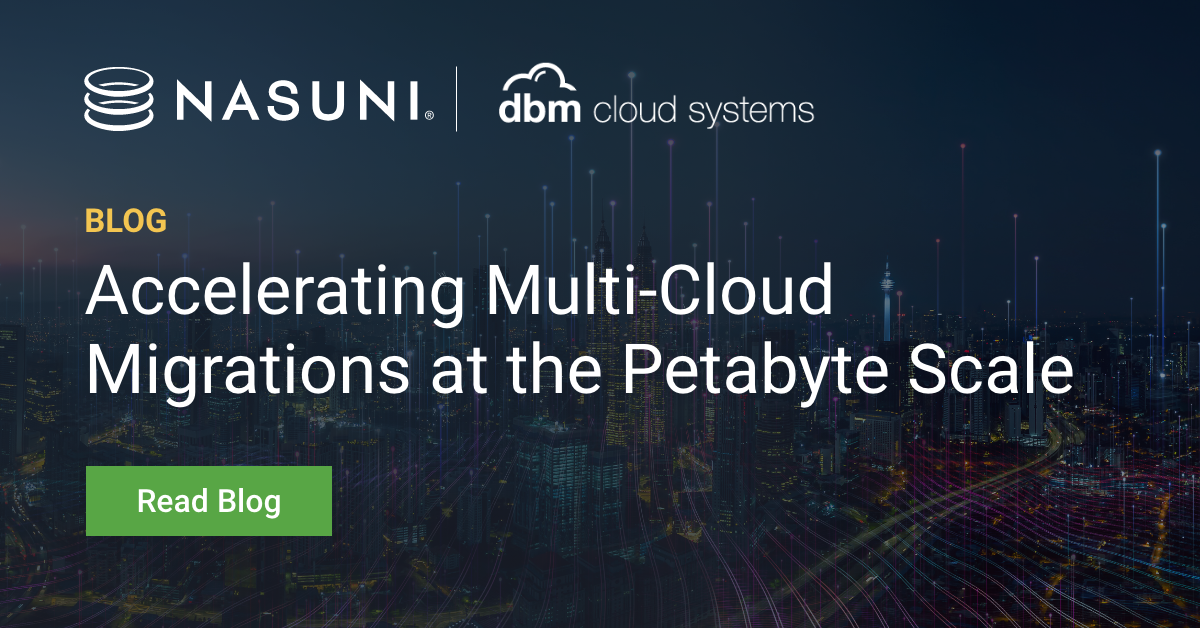Accelerating Multi-Cloud Migrations at the Petabyte Scale
The UniFS cloud-native file system, the Nasuni Analytics Connector, Global File Acceleration and the many other tools that power our file services platform have all been conceived and built in-house. But, as we continue to grow our base of multi-PB customers, and more of these large global companies adopt multi-cloud strategies, Nasuni made the unusual but exciting decision to accelerate our capabilities through an acquisition. The product team is extremely excited to onboard the technology of DBM Systems and expertise of Dr. Joseph Slember to ramp up our cloud-to-cloud migrations.
May 3, 2022

Normally we develop our innovations internally at Nasuni. The UniFS cloud-native file system, the Nasuni Analytics Connector, Global File Acceleration and the many other tools that power our file services platform have all been conceived and built by our own engineers. But, as we continue to grow our base of multi-PB customers, and more of these large global companies adopt multi-cloud strategies, Nasuni made the unusual but exciting decision to accelerate our capabilities through an acquisition. The product team is extremely excited to onboard the technology of DBM Systems and expertise of Dr. Joseph Slember to ramp up our cloud-to-cloud migrations.
At its core, Nasuni is designed to support multi-cloud deployments and portability, or the ability for customers to move file data from one cloud to another. In fact, one of the three rings in our original logo was meant to signify portability. Still, while UniFS is inherently portable, actually moving PBs of file data from one object store to another wasn’t the simple, frictionless experience we originally envisioned. This acquisition changes that.
This technology is designed to execute the migration of the file system, the associated objects, and audit trails in a fast, frictionless way. The technology allows us to move data effortlessly between different cloud hyperscalers or from hybrid or private cloud deployments into one of the public object stores.
Critically, it’s also designed to work effectively at scale. That means our large multinational enterprises with multi-PB cloud footprints can continue normal operations while a migration is underway. The disruption to end users will be minimal — the bulk of the data is moved in the background without anyone noticing.
This is an exciting new capability, but it’s an essential one, too. According to Accenture, 93% of companies now have a multi-cloud strategy, so we’re thrilled to be able to offer frictionless migrations and portability through the DBM technology. As a product team, we are by no means satisfied with where we stand. We’re continuing to build, innovate, and enhance the platform, so be sure to keep checking back here for more new developments in the coming months.